You have been choosing a plant for a long time in the store and, in the end, opted for an orchid. They are quite attractive flowers, but they also need proper care. But if you take care of them correctly, then these truly royal flowers will delight their owners with their splendor for a long time. Very often inexperienced owners of this plant ask the question: how to care for orchids at home? It all lies in the right choice of soil, air humidity, lighting and irrigation.
Content
Orchid care at home
Flower adaptation after shop
So, you brought the beauty home. But what can you do to make the flower endure stress with less losses, and perfectly adapt to new conditions, and not damage the rest of the flowers growing in your house? And how to properly care for a flower that has just been brought?
Quarantine duration
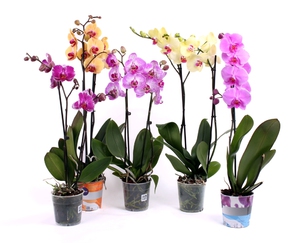 Most importantly, quarantine the flower for several weeks. To do this, you need to put the plant separately from the rest of the flowers. If there is no room for the plant on the window, then you can put it on the bedside table or in some other place. But here we must take into account the fact that a newly acquired flower does not need direct rays of the sun, it is better for the orchid to stand in a shaded place... Also, you do not need to feed the flower with fertilizers at this time, which are usually offered by sellers when buying a plant.
Most importantly, quarantine the flower for several weeks. To do this, you need to put the plant separately from the rest of the flowers. If there is no room for the plant on the window, then you can put it on the bedside table or in some other place. But here we must take into account the fact that a newly acquired flower does not need direct rays of the sun, it is better for the orchid to stand in a shaded place... Also, you do not need to feed the flower with fertilizers at this time, which are usually offered by sellers when buying a plant.
Watering a potted plant during dormancy is also undesirable, just watch its leaves and other parts all the time. This is necessary for the timely identification of probable flower pests, so as not to allow them to multiply. After quarantine is over, slowly accustom the flower to the sun on the windowsill and water a little as needed.
Transfer
It should be noted that transplanting a plant purchased in a store is not required. The flower can grow in its substrate for several years. Immediate transplantation is required only when the flower in the store is planted in sphagnum moss.
There is no need to treat a new orchid in a pot with any kind of floral "antistress", just keep the plant dry, and it will cope with stress on its own and take root in your apartment. Also, you do not need to treat the leaves with insect repellents., especially when they are not there. Why injure a plant that has already suffered a move? A flower, left alone and dry, activates its defenses, and it will normally be able to adapt to new conditions.
Fertilization, watering, lighting
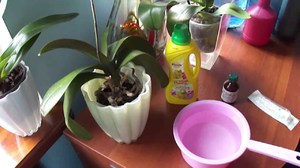 If you are interested in leaving, then you need to know that this flower is delicate and capricious, therefore it needs to create certain conditions for it. But caring for a flower is not difficult, the main thing is to clearly know what and when to do it.
If you are interested in leaving, then you need to know that this flower is delicate and capricious, therefore it needs to create certain conditions for it. But caring for a flower is not difficult, the main thing is to clearly know what and when to do it.
Shine
This is a major factor during orchid care and determines whether the plant will bloom or not.Since if the plant has enough light, then the flowering will be constant, and if there is not enough light, the leaves will eventually turn light green, after which they will stretch out and begin to turn yellow. When choosing lighting, you need to be guided by the following rules:
- in the summertime, the flower is best darkened... Moreover, when there is a high probability of direct sunlight hitting the leaves. Matte film or plastic is great for darkening;
- flowers like a lot of ambient light... Direct rays of the sun will not work, this must be taken into account when leaving;
- the length of daylight hours is also important for the flower... Normal daylight hours for an orchid is 12 hours, if the daylight hours lasts less than 10 hours, then the plant requires artificial light. Caring for these colors implies using lighting with fluorescent bulbs for these purposes;
- in the autumn, blackening can be omitted... At this time, the plant experiences a state of dormancy - the shoots are laid and ripened. You need to consider this factor when leaving.
Temperature
All orchids are divided into three types according to the temperature regime:
- cold-loving plants... Native to the highlands or subtropical regions, these flowers include most varieties, many Laelias and Paphiopedilums, and Australian dendrobiums. The most optimal temperature for these plants is the daytime summer temperature - 21 degrees, and the night winter temperature - 13-14 degrees;
- medium temperature flowers... These species grow in the middle zones of the mountain tropics and these orchids include odontoglossums and miltonia. Care for this flower must be carried out in a colder temperature regime. The daytime temperature in summer for them should be 19–23 degrees, and winter night temperatures - 13–14 degrees;
- heat-loving plants... These flowers are native to coastal tropical plains and forests, and include some species of cattle, phalaenopsis, and dendrobiums. These varieties require warm conditions, because the daytime temperature in summer for them must be 16-33 degrees, and the night temperature in winter - 16-19 degrees. The daily difference is needed no more than 3-5 grams.
By and large, you can see that almost all varieties of orchids that grow in your home in pots will feel great at a temperature of 19-26 degrees, during the day and 14-25 grams. at night.
Watering
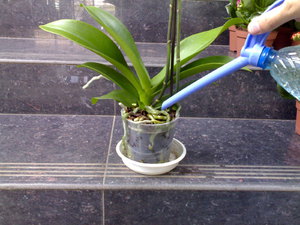 It should be noted that in nature, the bulk of these flowers is never found in water, since their roots cannot withstand moisture stagnation. But each species has its own peculiarity of watering. For example, Phalaenopsis and Pafiopedilium love moist soil all the time, and Oncidium and Dendrobium need drier soil and they need to be watered only when the earth dries up.
It should be noted that in nature, the bulk of these flowers is never found in water, since their roots cannot withstand moisture stagnation. But each species has its own peculiarity of watering. For example, Phalaenopsis and Pafiopedilium love moist soil all the time, and Oncidium and Dendrobium need drier soil and they need to be watered only when the earth dries up.
But, by and large, all orchids are more tolerant of drying out than waterlogging. They need abundant watering only during the ejection of peduncles, flowering and active growth. If there is a shortage of water, then you will certainly find out about this: the leaves and pseudobulbs of the plant wrinkle. If there is an excess of moisture, the leaves will get wet and turn yellow, and the roots will rot.
In winter, when it is cool and little light, it is not necessary to water the orchid abundantly, and the plant also does not require a large amount of water after flowering during dormancy.
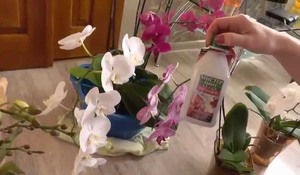 Proper care consists in watering the flower with soft water. Rainwater and settled melt water are perfect for this. You can water the plant with plain boiled water.... In the summer, water it 2-3 times a week, after the top layer of the earth dries up, and in winter, watering should be minimized - 1-2 times a week. Observe if the pseudobulb is shriveled, if this phenomenon exists - the flower needs water.
Proper care consists in watering the flower with soft water. Rainwater and settled melt water are perfect for this. You can water the plant with plain boiled water.... In the summer, water it 2-3 times a week, after the top layer of the earth dries up, and in winter, watering should be minimized - 1-2 times a week. Observe if the pseudobulb is shriveled, if this phenomenon exists - the flower needs water.
Watering a flower consists in placing the plant in a pot in a container with warm water for 10 minutes, or watering the orchid intensively with water from the shower. In the latter case, the earth will be completely wetted, and water will come out of the drainage holes.After watering, hold the plant on a special grate, then all the water will come out, and then place it in a decorative pot.
Top dressing and fertilization
The flower needs bait only during its growth, it is recommended to fertilize no more than once every 2-3 weeks. For this, special additives are used - Bona Forte, Pocon or Greenworld.
The most important thing is to keep the indicated proportions on the pack and not overdo it.
These flowers do not like the concentration of mineral salts in the soil and may not tolerate it. because it is necessary to clean the substrate with clean water during fertilization, alternate watering and feeding once a week. Never buy bait that is intended for other flowers, do not feed the flower in winter and during rest.
Most experts oppose frequent groundbaiting. They argue that frequent fertilization lowers the plant's immunity, therefore it is more susceptible to various diseases. Therefore, ideally, it is not necessary to fertilize the orchid at all, as the plant receives all the required nutrients from the substrate, but this rule only applies when the substrate is renewed every few years.
How does an orchid reproduce?
If you know the peculiarities of caring for orchids, then you can easily reproduce the desired specimen. Reproduction of this plant is done in various ways, we will tell about each of them in more detail.
Reproduction by "children"
“Kids” are small new plants. These lateral shoots tend to form in those flowers that have a high nitrogen content. If you notice "kids", then try to spray the plant quite often and wait until they grow up and give roots. You can then separate the new flower, treat it with ground charcoal, and plant it separately.
Reproduction by layering
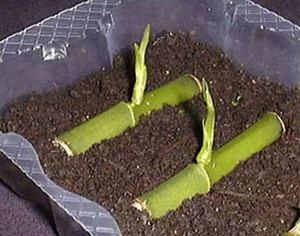 This breeding option is to use cuttings, these cuttings are found in sympodial orchids. Air suckers quite often appear in shoots that have cylindrical or elongated thickened shoots.
This breeding option is to use cuttings, these cuttings are found in sympodial orchids. Air suckers quite often appear in shoots that have cylindrical or elongated thickened shoots.
In this case you will need a small greenhouse above the bent part of the stem... You can create it from a small plastic container and make a slot on the side. Then moisturize the moss and wait for the sleeping buds to wake up.
The leafless shoot, located horizontally in the greenhouse, must be regularly moistened and heated. In about a month, the dormant buds "wake up", and young bushes with roots and leaves will grow out of them.
After rooting, small orchids must be carefully separated from the mother branch, after processing, you can also transplant into a small pot. Keep them in the greenhouse for a short time.
Reproduction in a vegetative way
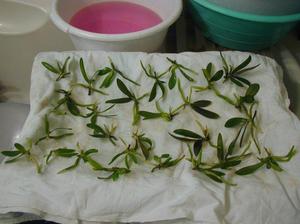
This method is convenient for propagating almost all types of flowers. The rhizome of plants only needs to be divided, leaving several pseudobulbs on each plot. But this breeding method is only suitable when the orchid is quite large.
Take the flower out of the pot, then carefully separate the soil from the roots. Use a pair of garden shears to cut through the roots, leaving a few bulbs on each cut. Pshower the cuts with charcoal, plant all flower fragments separately... If it appears with an orchid, how to care in this case, then everything is easy here. Spray them every day, water the new flowers a little until new leaves or shoots form. This confirms that the plant has taken root.
Blooming and after care
Most people are interested in how to care for a plant when it blooms. Features of care at this time are as follows:
- it is best to raise the temperature by 5 degrees at night;
- a blooming orchid requires abundant watering. It is best to water the plant under a warm shower, and the water temperature must be 35 grams, after watering, remove moisture from the growing point, otherwise it will rot;
- at this time, the flower needs feeding.To do this, use a special fertilizer that is intended specifically for orchids, but you cannot overfeed the flower;
- during flowering, the flower cannot be transplanted, otherwise the plant will drop all flowers and buds.
If you want the orchid to bloom as long as possible, do not constantly rearrange the plant.
Post-flowering care
When the flowering ends, and the peduncle has turned black and dried, it must be cut under the base and removed. After flowering, the bait decreases. In winter, watering should be reduced to once a month; it is best to spray the flower several times with water.
It should be noted that if the plant needs a transplant, then it will not bloom, and in order for the orchid to bloom again, change the location of the pot, move it to another place.
If, after flowering, you see that the leaves of the flower shriveled and turn yellow, and it does not give a peduncle, also move the pot to another place. Then the plant will bloom constantly.
We hope that all the above information has come in handy for you, and now you know how to care for orchids at home and, if everything is correct, this beautiful plant will constantly delight you with flowers. Since blooming is the most favorite time in the life of every flower lover.

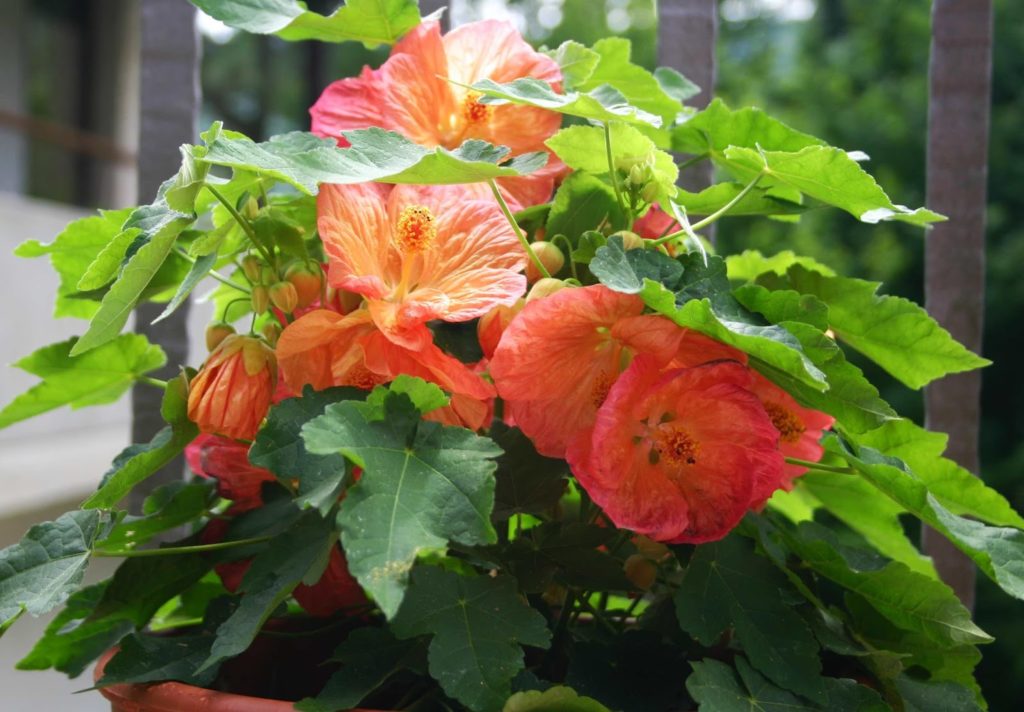
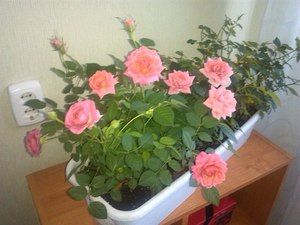
1 comment